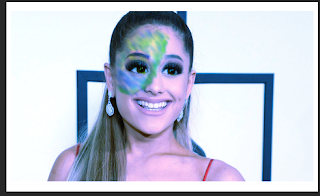Research Techniques
Understanding different types and methods of research
To
undertake successful research, you need to have a good understanding of the
main types of research and the methods used.
Starting
with the methods – there are two main methods of finding out information they
are:
Primary
|
Secondary
|
These methods will produce information that can be
split into two types of information.
Quantitative
|
Qualitative
|


RESEARCH
METHODS IN PRACTICE
For
the methods that we have looked at there are good and bad points
Primary
|
Primary
research is new which means no one has created work like yours before.
|
A
negative of primary research could be that there is more than one answer to
the research making it unreliable
|
|
Secondary
|
Secondary
research could be used from someone else and it might not be original.
|
Secondary
research is quicker to find and it has been done for you
|
RELIABILITY
OF INFORMATION
Below are some websites – have a look through. Some
are real, some are fake.
Can you identify which is which?
Website address
|
Real or fake
|
Reason
|
|
|
FAKE
|
The image isn’t focused and you can’t search for
Haggis.
|
|
|
FAKE
|
This article is fake because there isn’t such things
as tree octopus’ and the layout isn’t professional.
|
http://www.hants.gov.uk/
|
Unavailable
|
|
|
|
Fake
|
The opening paragraph seems too good to be true
|
|
|
Fake
|
Can’t get dehydrated water and it could be a scam
|
Fake
|
Doesn’t look real and there is no contact
information.
|
|
http://www.hampshire.police.uk/internet
|
Real
|
Police website
|
Why spend money on research?
Media products are expensive to produce
Need to make sure that it will attract the right audience
To make sure the audience reacts to it in the right way
To ensure the product can be completed in the required time
To produce product within budget
RAJAR TASK
The radio station with the largest amount of listeners is BBC Radio 2 with
15,298,000
210,000 people listen to Capital South Coast
The average amount of time someone listens to Spirit FM is 6.7 hours
MAGAZINE QUESTIONAIRE:
What interests you within the college?
What do you think the future holds for you?
What type of music do you listen to?
How often do you listen to music?
Where do you shop for clothes or accessories?
What cafe do you like the most in the college?
Does the library interest you?
Do you watch or play any sports at all? if so what are they?
How often do you go shopping?
Do you read any magazines or newspapers?
What is a focus group?
According to http://www.businessdictionary.com/definition/focus-group.html a focus group is a "small group of people usually between 4-15 people brought together with a moderator to focus on a specific product or topic"
My Career Path!
To work in the radio industry.
Radio
Presenter or producer
For me to be able to work in the radio industry
I will have to:
· Have excellent presentation and
performance skills
· To generate my own original ideas
and to think creatively about communicating them to audiences
· Understand how to use your voice effectively
for radio
· Learn how to use radio equipment and
to operate different radio studios
· Engaging with different audiences
· Meet tight deadlines and react
quickly whilst under pressure
 |
Would start out working for a local radio station, using determination to work my way up towards the bigger radio industries like Capital or the BBC. |




Comments
Post a Comment